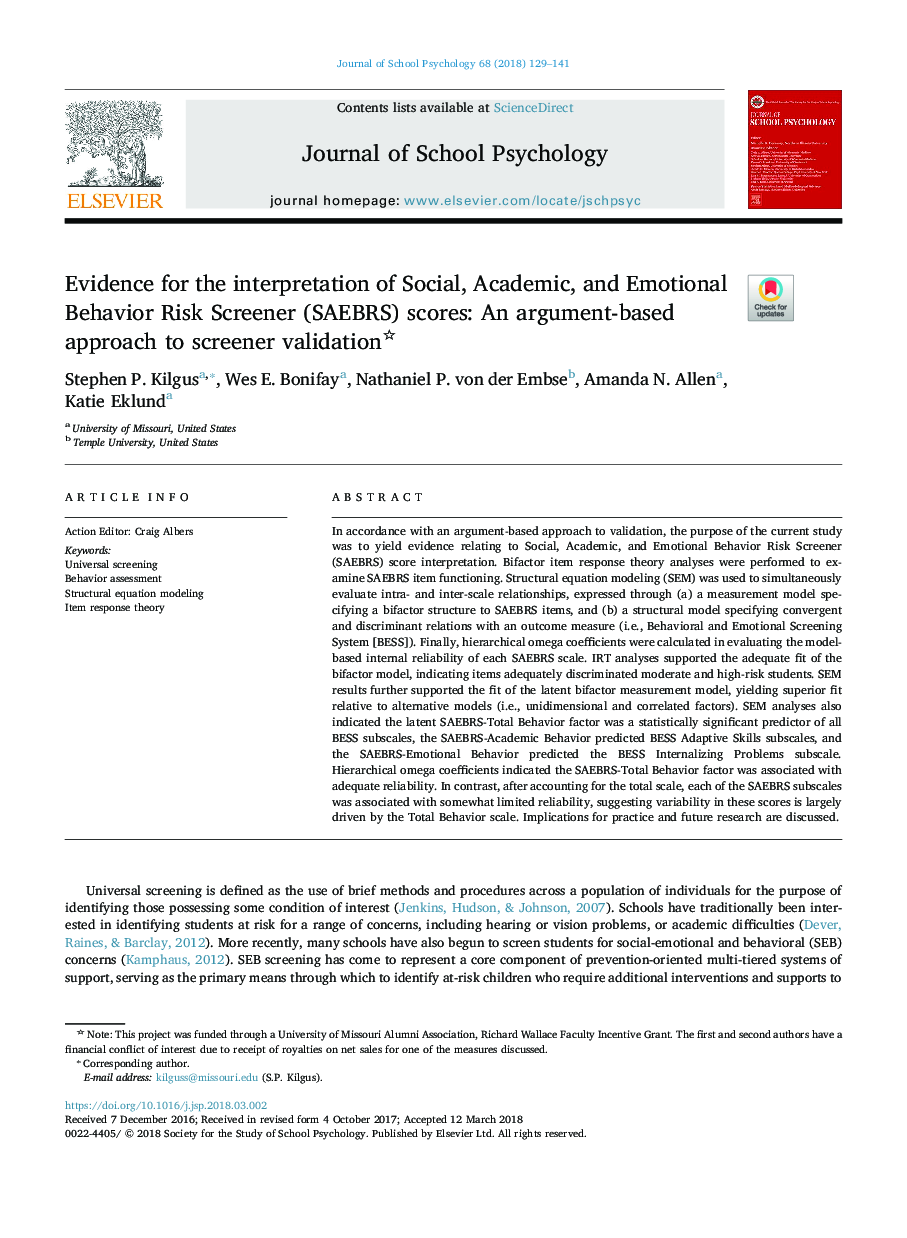| کد مقاله | کد نشریه | سال انتشار | مقاله انگلیسی | نسخه تمام متن |
|---|---|---|---|---|
| 6843735 | 1436267 | 2018 | 13 صفحه PDF | دانلود رایگان |
عنوان انگلیسی مقاله ISI
Evidence for the interpretation of Social, Academic, and Emotional Behavior Risk Screener (SAEBRS) scores: An argument-based approach to screener validation
دانلود مقاله + سفارش ترجمه
دانلود مقاله ISI انگلیسی
رایگان برای ایرانیان
کلمات کلیدی
موضوعات مرتبط
علوم انسانی و اجتماعی
روانشناسی
روان شناسی کاربردی
پیش نمایش صفحه اول مقاله

چکیده انگلیسی
In accordance with an argument-based approach to validation, the purpose of the current study was to yield evidence relating to Social, Academic, and Emotional Behavior Risk Screener (SAEBRS) score interpretation. Bifactor item response theory analyses were performed to examine SAEBRS item functioning. Structural equation modeling (SEM) was used to simultaneously evaluate intra- and inter-scale relationships, expressed through (a) a measurement model specifying a bifactor structure to SAEBRS items, and (b) a structural model specifying convergent and discriminant relations with an outcome measure (i.e., Behavioral and Emotional Screening System [BESS]). Finally, hierarchical omega coefficients were calculated in evaluating the model-based internal reliability of each SAEBRS scale. IRT analyses supported the adequate fit of the bifactor model, indicating items adequately discriminated moderate and high-risk students. SEM results further supported the fit of the latent bifactor measurement model, yielding superior fit relative to alternative models (i.e., unidimensional and correlated factors). SEM analyses also indicated the latent SAEBRS-Total Behavior factor was a statistically significant predictor of all BESS subscales, the SAEBRS-Academic Behavior predicted BESS Adaptive Skills subscales, and the SAEBRS-Emotional Behavior predicted the BESS Internalizing Problems subscale. Hierarchical omega coefficients indicated the SAEBRS-Total Behavior factor was associated with adequate reliability. In contrast, after accounting for the total scale, each of the SAEBRS subscales was associated with somewhat limited reliability, suggesting variability in these scores is largely driven by the Total Behavior scale. Implications for practice and future research are discussed.
ناشر
Database: Elsevier - ScienceDirect (ساینس دایرکت)
Journal: Journal of School Psychology - Volume 68, June 2018, Pages 129-141
Journal: Journal of School Psychology - Volume 68, June 2018, Pages 129-141
نویسندگان
Stephen P. Kilgus, Wes E. Bonifay, Nathaniel P. von der Embse, Amanda N. Allen, Katie Eklund,